When I first started designing spaces, I thought everything hinged on color and furniture. And while those elements are crucial, there’s another superstar in interior design that I overlooked for far too long—texture. I remember a small living room project I worked on years ago. The palette was perfect, the furniture was modern and clean, yet something felt off. The space lacked warmth and depth. That’s when I added a chunky knit throw, a woven jute rug, and a set of ceramic vases with matte finishes. Suddenly, the room came alive. That’s the magic of texture—it’s the secret ingredient that makes a room feel complete.
Texture doesn’t just appeal to our sense of sight; it engages touch and even evokes emotion. It’s the soft velvet pillow you can’t resist leaning on, the rustic wooden table that feels earthy and grounding, or the glossy vase that adds a pop of modern sophistication. Whether you love a minimalist aesthetic or prefer maximalist charm, texture can take your room design from flat to fabulous.
In this guide, I’ll show you how to master the art of adding texture to your room design. From mixing materials to layering textiles, you’ll learn the tricks of creating a multi-dimensional, aesthetic space that feels as good as it looks.
Why Texture Matters in Interior Design
1. Adds Depth and Dimension
Without texture, a room can feel one-dimensional or sterile. Texture creates contrast and interest, adding layers that make a space visually dynamic and engaging.
2. Enhances Comfort and Warmth
Textures like soft knits, plush rugs, and natural wood bring a sense of coziness to a room. They make spaces feel inviting and lived-in, rather than cold or overly curated.
3. Complements Your Color Palette
Texture isn’t just about touch; it also affects how we perceive color. For example, a matte navy wall feels moody and dramatic, while a glossy navy finish feels sleek and modern.
Choosing Textures for Your Aesthetic
1. Natural and Organic Textures
- Wood: Reclaimed wood tables, bamboo blinds, or oak flooring add warmth and grounding energy.
- Stone: Incorporate marble countertops, stone planters, or slate tiles for a touch of natural luxury.
- Wicker and Rattan: These materials are perfect for boho, coastal, or Scandinavian aesthetics.
2. Soft and Plush Textures
- Velvet: Adds elegance and softness—perfect for pillows, chairs, or curtains.
- Knits: Chunky knit blankets or knitted poufs create a cozy vibe.
- Rugs: Look for high-pile rugs, sheepskin, or woven designs to anchor your room.
3. Shiny and Reflective Surfaces
- Metal: Brass, chrome, or matte black metals add an industrial or modern touch.
- Glass: Use glass vases, coffee tables, or lighting to balance heavier textures.
- Mirrors: These not only reflect light but also enhance the room’s dimension and texture.
4. Matte and Rough Finishes
- Ceramics: Matte ceramic vases, planters, or dinnerware create an understated, earthy charm.
- Concrete: Consider concrete planters, pendant lights, or tabletops for an urban, industrial aesthetic.
- Terracotta: This material feels warm and grounding—ideal for pots or accent tiles.
Creative Ways to Add Texture
1. Layer Your Textiles
- Combine a lightweight linen duvet with a chunky knit throw and velvet pillows for a luxurious yet cozy bed.
- Layer rugs by placing a smaller, patterned rug over a neutral jute or sisal base rug.
2. Use Accent Walls
- Textured Wallpaper: Try grasscloth wallpaper for a subtle, organic feel or bold patterns for drama.
- Wood Paneling: Shiplap, beadboard, or reclaimed wood panels can create a stunning focal point.
- Stucco or Limewash: These finishes add a natural, tactile quality to walls.
3. Accessorize Thoughtfully
- Mix textures in your décor. Pair a smooth, glossy vase with rough, woven baskets or place a polished stone tray on a wooden table.
- Incorporate natural elements like dried pampas grass, eucalyptus, or fresh flowers in textured ceramic or glass vases.
4. Add Greenery
Plants not only bring life and color but also add texture through their leaves, stems, and pots. Opt for a mix of trailing vines, spiky succulents, and broad-leafed plants.
5. Highlight Architectural Features
If you have exposed brick walls, wooden beams, or concrete floors, embrace them! These natural textures add character and uniqueness to your room.
Picture Gallery
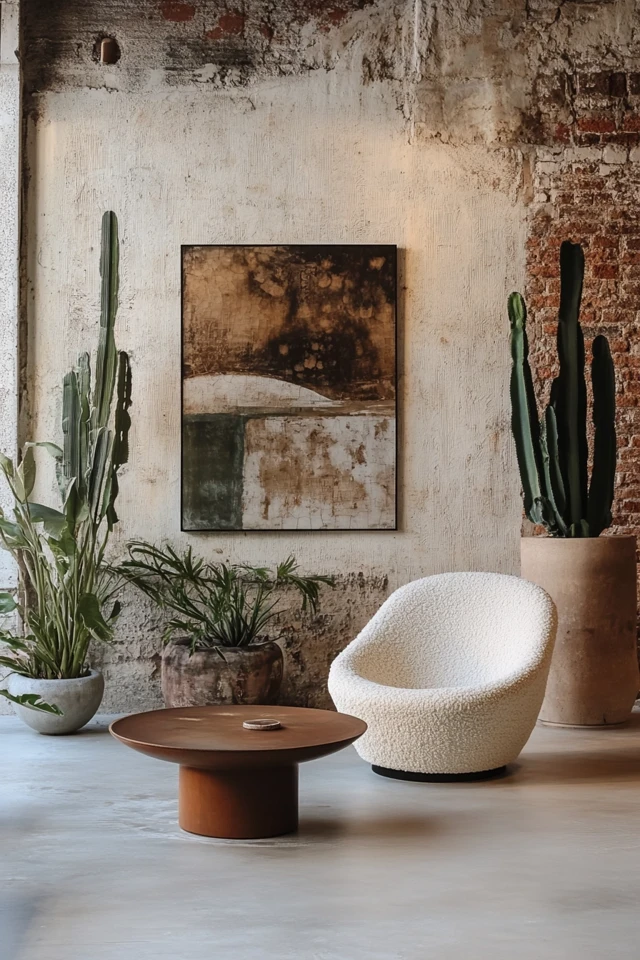
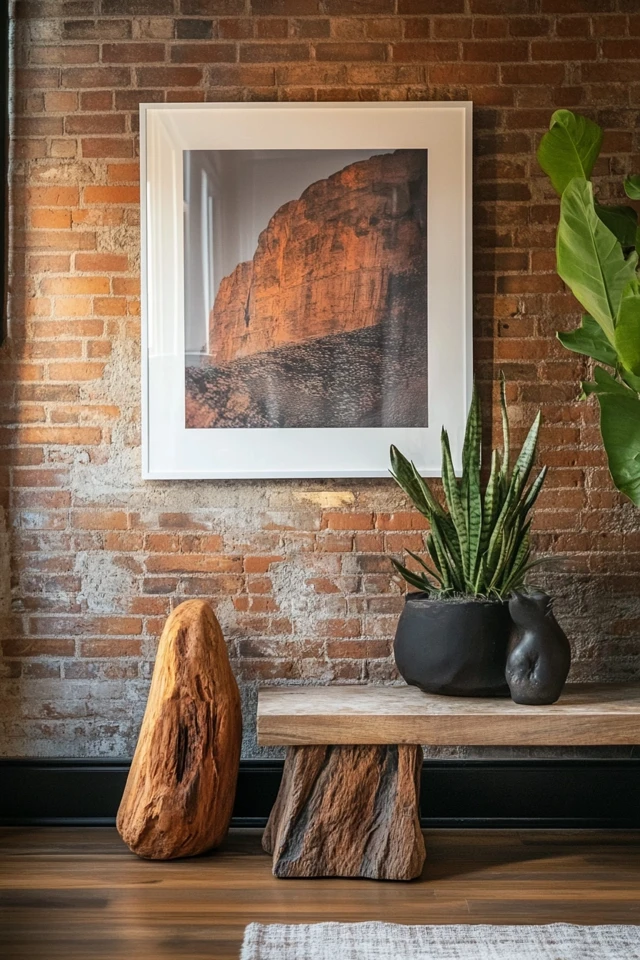

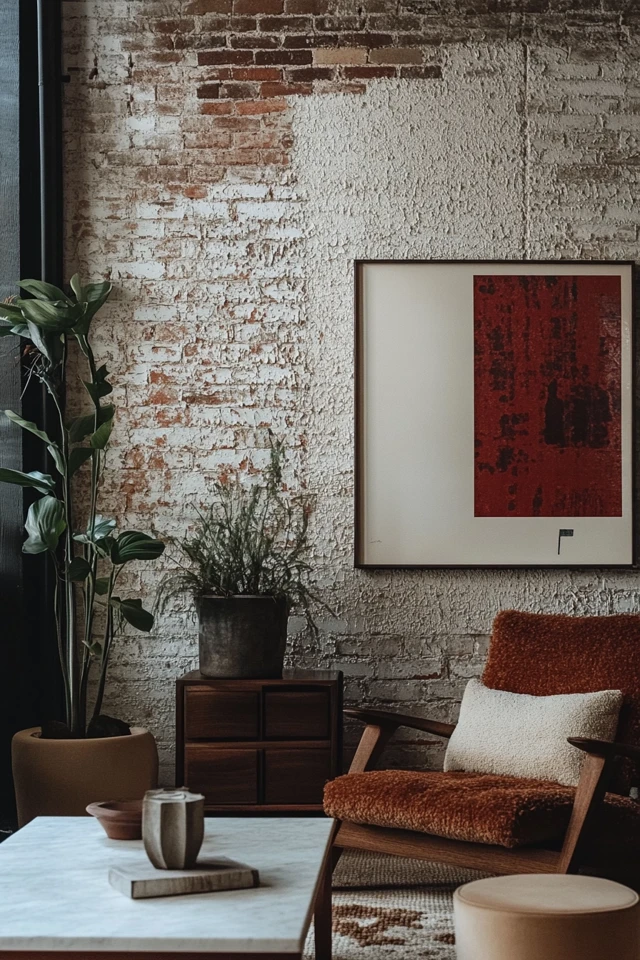
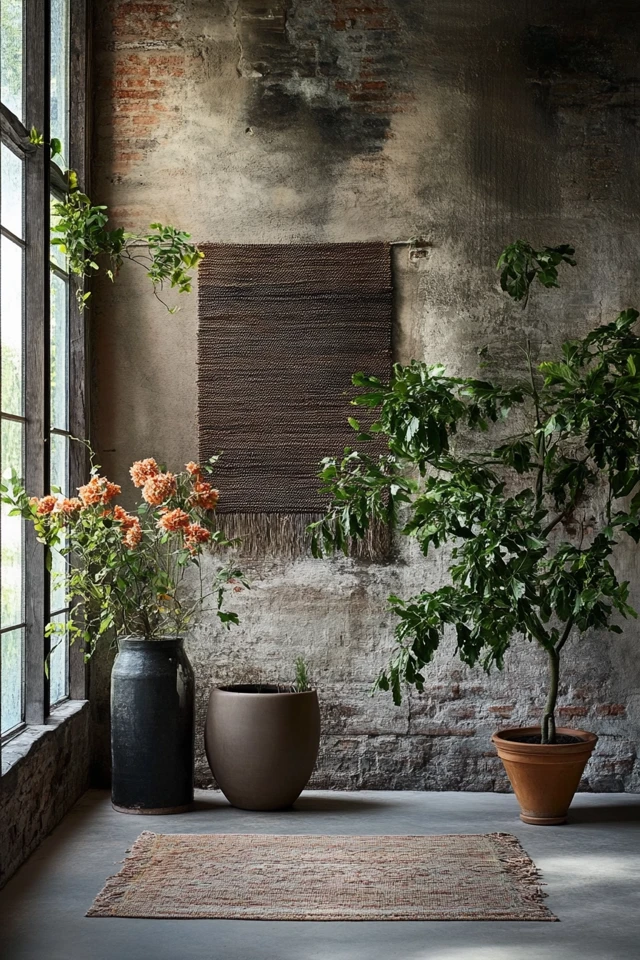
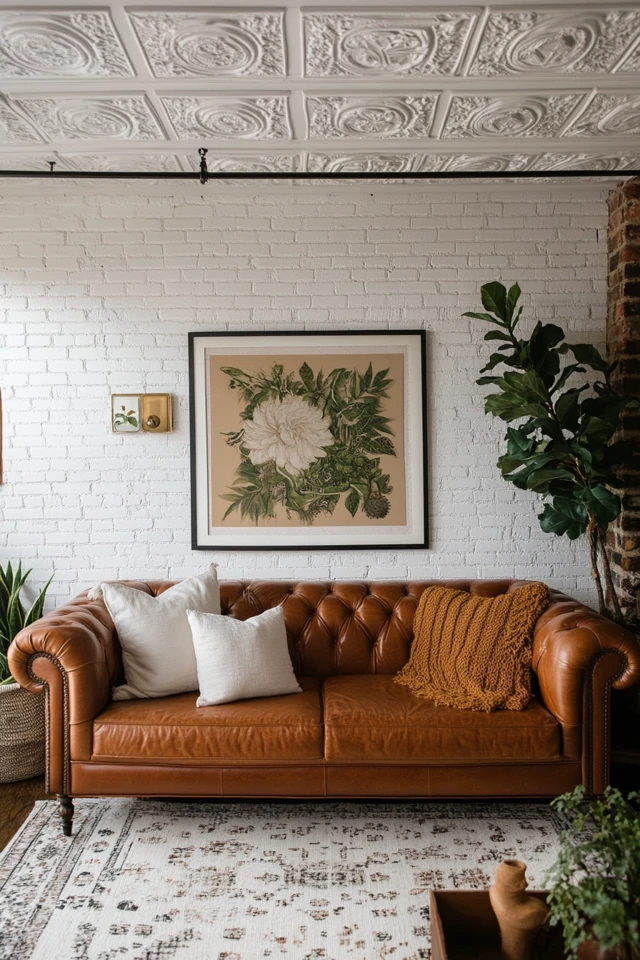
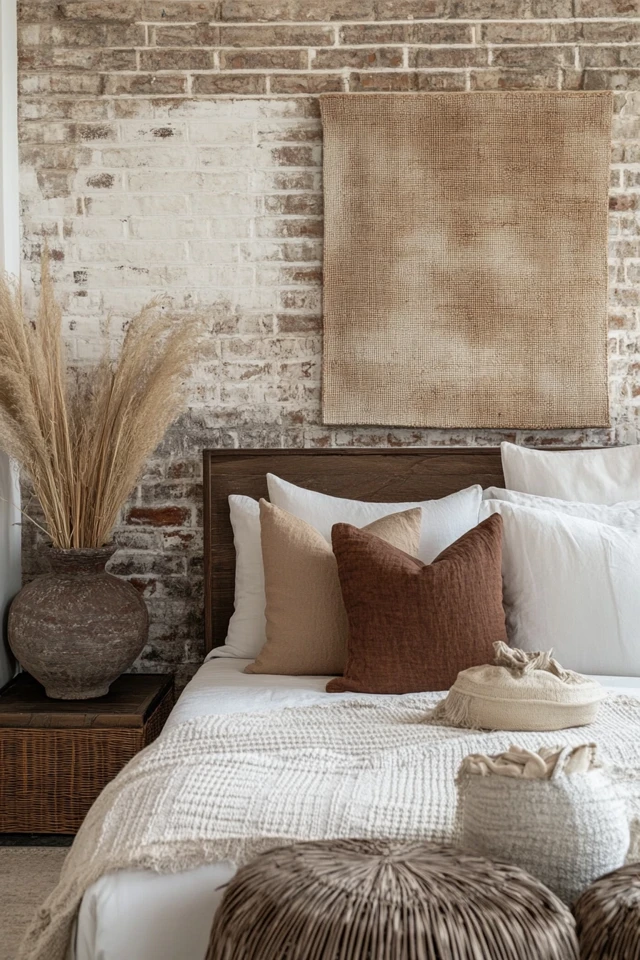
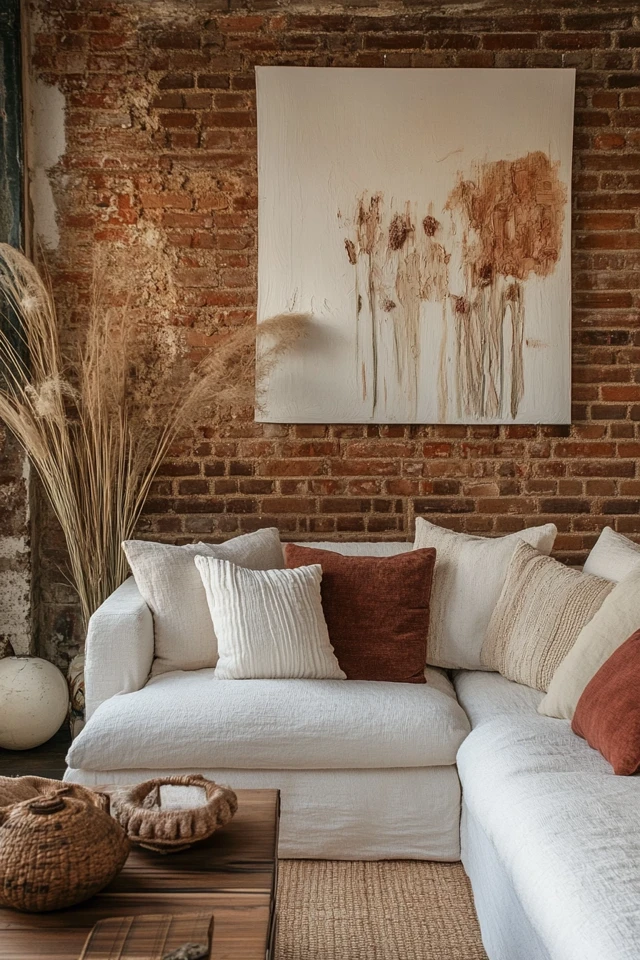
Tips for Balancing Texture
1. Start with a Neutral Base
A neutral foundation (like white walls or simple furniture) allows textures to stand out without overwhelming the space.
2. Mix Contrasting Textures
Combine soft and hard, smooth and rough, shiny and matte for a balanced look. For example, pair a sleek leather chair with a fluffy sheepskin throw.
3. Follow the Rule of Three
Stick to three main textures in one area to keep it cohesive. For example, combine a velvet pillow, a knit blanket, and a wood side table.
4. Consider Scale
Balance larger textured pieces (like a jute rug) with smaller ones (like a ceramic vase or macramé wall hanging).
Common Mistakes to Avoid
1. Overloading the Space
Too many textures can make a room feel chaotic. Edit your selections and focus on a few standout pieces.
2. Ignoring Functionality
While texture is important, comfort should never take a back seat. Avoid overly scratchy fabrics or hard surfaces in areas meant for relaxation.
3. Sticking to One Type of Texture
Using only one texture, like all smooth surfaces, can make a space feel monotonous. Mix it up for a more dynamic look.
Conclusion
Texture is like the soul of interior design. It takes your room from a flat, lifeless canvas to a space that feels layered, inviting, and rich with personality. Whether you’re piling on plush textiles, highlighting natural materials, or playing with finishes, texture is your ultimate tool for creating an aesthetic room that doesn’t just look good but feels amazing to live in.
Looking back, every space I’ve designed that truly “wowed” people had one thing in common—intentional use of texture. It’s the secret sauce that makes people want to linger in a room, touch the surfaces, and soak in the atmosphere. So, as you embark on your own design journey, don’t just focus on what looks good—think about what feels good. Your dream room is all about layers, balance, and that perfect touch of texture.
FAQs
1. What are the easiest ways to add texture to a room?
Layer textiles (like rugs, throws, and pillows), incorporate plants, and use materials like wood, stone, or ceramics for instant texture.
2. Can I mix different textures in one space?
Yes! Mixing textures creates depth and interest. Balance contrasting textures like soft and hard, smooth and rough, or shiny and matte.
3. How do I balance texture in a small room?
Stick to a few key textures to avoid overwhelming the space. For example, combine a plush rug, a velvet pillow, and a ceramic vase.
4. Are textured walls trendy or timeless?
Textured walls, like limewash or shiplap, are timeless because they add character and charm to a room without feeling overdone.
5. What’s the best way to incorporate natural textures?
Use organic materials like wood, rattan, or linen. Pair these with greenery or earthy accents like stone planters or terracotta pots for a cohesive look.

